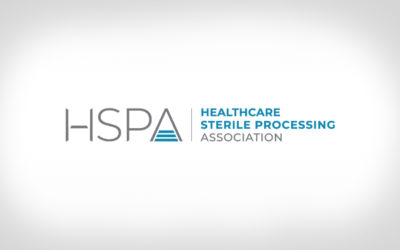
By Julie E. Williamson
Quality outcomes and the consistent provision of safe, standards-based patient care hinges on employee integrity and staff members’ personal commitment to professionalism and following correct processes, even when faced with external pressures and resource constraints.
In the sterile processing (SP) environment, the importance of diligently following the latest standards, guidelines, best practices, instructions for use (IFU) and internal policies and procedures has been addressed in many media reports, some of which stemmed from processing mistakes that led to contaminated or malfunctioning devices being used for patient care. Other reports have highlighted SP professionals’ concerns about their health care customers and facility executives failing to address problems that negatively affected SP-related processes and patient outcomes – including ensuring appropriate resources are available to technicians working in device processing areas.
HSPA’s staff members and board of directors follow such media reports with great interest and contribute to articles and educational resources that identify pervasive challenges and identify solutions to overcoming them. Even though HSPA will never comment about specific news reports surrounding SP-related incidents at any facility due to a lack direct knowledge about organizations’ specific situations, the association will always encourage its members, certification holders and all SP professionals to hold the line and ensure that quality practices and safety measures are always followed. If any staff member, including the least-experienced member of the team, witnesses a practice that seems to deviate from standards, best practices or IFU, they should promptly address their concern with their team member or departmental leader to ensure that safety remains the top priority.
TEAMWORK AND INTEGRITY MATTER
Establishing and supporting a culture rooted in the highest level of quality and integrity takes teamwork and a commitment to overcoming fear, increasing employee and customer confidence and ignoring one’s inner voice that may ponder whether they have a right to question processes (or even authority) when a questionable practice is followed. Some employees may be reticent to speak up when they witness a shortcut or skipped process – or when the SPD is pressured to process devices more quickly than is safe, prudent or outlined in the IFU. In some cases, staff members might fear retaliation or an unnerving confrontation from their teammate or departmental customer, or they may assume their opinion will not be valued. It is vital that facility and SP leaders not only encourage their employees (and health care customers as appropriate) to comply with current standards, regulations, IFU and internal policies, but also create a supportive leadership structure where staff members can promptly voice their concerns.
If a technician witnesses a co-worker skipping steps or performing a task incorrectly, either because of time pressures or a lack of knowledge or experience with the task at hand, they should be encouraged by their supervisor or manager to address the situation with their teammate immediately, and in a supportive way. The bottom line: employees and SP leaders must always be encouraged to speak up in the moment, share knowledge about correct practices with co-workers and interdepartmental colleagues, and prioritize practice quality, consistency and patient safety. Furthermore, if a member of the operating room, for example, makes processing demands that deviate from standards, best practices, IFU and policies and procedures, all SP staff members should be supported by their department’s leadership to explain to their OR customers why such a request cannot be safely made (with current literature provided to support the response). If pressure from the customer department continues (or if an SP technician continues taking shortcuts or following the inappropriate practice even after being showed the correct way), the situation should be addressed with SP leadership. There may be times when involvement and support from the Infection prevention and control or risk management departments could also prove beneficial.
Also important is recognizing that even experienced leaders may at times share questionable advice or push for unsafe processing requests. Such circumstances may arise when an SP supervisor or manager lacks knowledge about a specific practice, process or standard or attempts to rush a process or meet other non-standards-based requests from customers to avoid interdepartmental tension. Again, in such instances, it becomes vital that staff members speak up and explain to their leader why such a request or practice is risky, based on the current standards, IFU or policies. If an SP leader continues pushing for a shortcut or other process change that does not comply with best practices or safety standards (or refuses to step in and support their SP team when customers make unreasonable requests), technicians will need to explore other mitigation approaches. If they have a solid relationship with the infection preventionist (IP), for example, they may seek their support and ask them to address the situation directly. If, however, pressure to perform unsafe or questionable practices continues even after an IP or organizational leader is notified, the SP professional may decide the best solution is to seek employment elsewhere. For especially egregious requests or ongoing issues that could jeopardize employee or patient safety, they may also submit an anonymous complaint with the appropriate governmental agencies such as the Occupational Safety and Health Administration and Centers for Medicare and Medicaid Services.
Doing the right thing is always critical in health care, even when no one else is watching or when it is difficult. Saying no on the job is rarely easy but when patient safety is on the line, no health care professional should remain silent, especially when saying yes can mean the difference between a positive and negative patient outcome.
– Julie E. Williamson is the HSPA director of communications and editor-in-chief.








